Automotive temperature sensor manufacturer
What is a car temperature sensor? Function and classification of automobile temperature sensor
Cooling water temperature sensorIntake air temperature sensor
Fuel temperature sensor
Catalyst monitoring
Oil temperature sensor
Charge air temperature sensor
Driver or passenger seat temperature (air conditioning)
High temperature sensors for EGR, turbochargers, soot filters, DeNOx catalysts with platinum measuring resistor
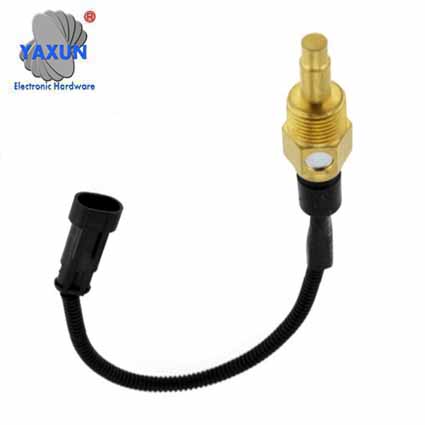 |
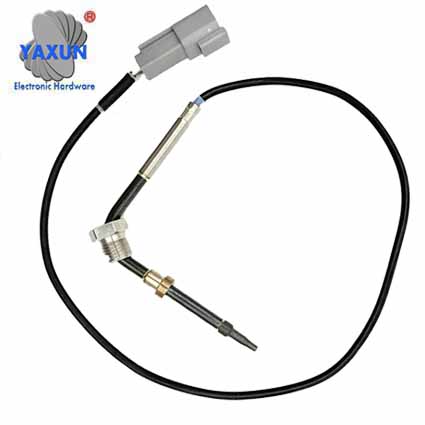 |
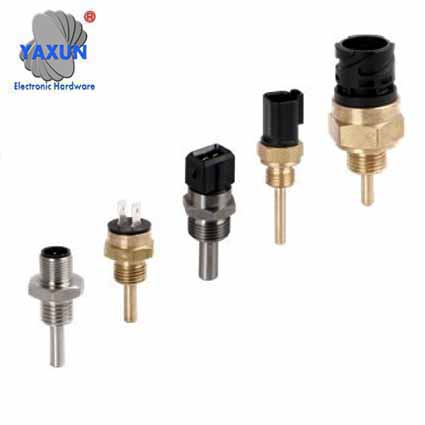 |
| Kfz-Sensor für Wasser temperatursensor-Alarm | Automobile exhaust temperature sensor PT200 | ECU system Digital temperature sensor |
NTC stands for negative temperature coefficient (coefficient).
It is a type of sensor whose property is that its resistance decreases as the temperature rises.
An NTC, i.e. a measuring resistor with a negative temperature coefficient, a thermocouple or a platinum measuring resistor are theoretically suitable for recording high temperatures. The temperature detection via NTC thermistor is possible from approx. - 40 ° C to + 200 ° C. At higher temperatures, for example for measurements in exhaust gas up to 1000 ° C, a high temperature sensor (HTS) using a thin-film platinum measuring resistor or a thermocouple is useful.
Temperature sensors, also called temperature sensors, provide a variable electrical voltage as a signal as a measure of the temperature. This signal is analog.
Circuit symbols (one arrow symbolizes the temperature, the other the resistance)
Circuit symbol NTC
Note: In contrast, there are of course PTC's (positive temperature coefficient). Its resistance increases when the temperature rises. Basically, every conductor or filament lamp wire is a PTC. PTCs are used as heating elements (e.g. lambda probe heating).
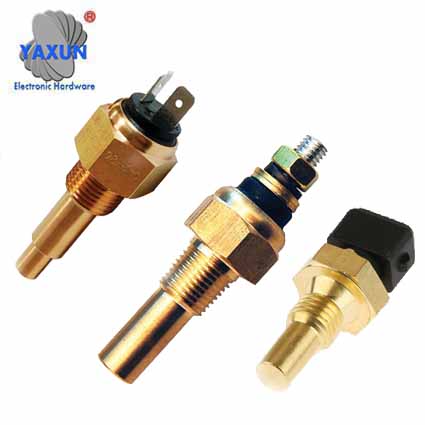
Explanation using the example of the coolant NTC
The coolant temperature sensor records the operating temperature of the engine. For this purpose, the NTC resistor is heated by the coolant, i. H. The resistance of the temperature sensor changes depending on the coolant temperature. When the engine is cold (-20 ° C), the NTC has a high resistance (e.g. approx. 14 kΩ, blue characteristic line in the diagram). When the coolant heats up (+ 80 ° C), the resistance drops to a low value (e.g. 300 Ω). The control unit supplies the NTC with an auxiliary voltage of 5 volts. The current causes a voltage drop at the NTC, which is measured in the control unit. The voltage drop decreases according to the decrease in resistance. The control unit detects the coolant temperature from the voltage drop. When the engine is cold, the voltage drop is high, the control unit increases the amount of fuel to be injected in order to enrich the mixture.Physical principle
The behavior of an NTC thermistor is remarkable, after all, you know from physics lessons that a conductor is less conducive to electrons when it is warm. But temperature sensors are semiconducting components that have a PN transition (see explanation). At the transition between the p- and n-conducting layer, the resistance decreases as the temperature rises, thus facilitating a greater flow of electrons.
NTC principle
On the one hand, pure semiconductor materials and, on the other hand, various other alloys with negative temperature coefficients show thermoconductive behavior. Semiconducting metal oxide mixtures such as ZkTiO4 and MgCr2O4 and many more are used. Another term for NTC thermistors is also thermistor.
Coolant temperature sensor
Typical NTC diagram of three different NTCs. 2 KΩ, 3KΩ and 5KΩ (at 25 ° C)
A failure of the coolant NTC is often noticeable through poor starting behavior, increased idling speed and higher fuel consumption. The exhaust gas also gets worse. Reason: a connector that has been detached, for example, simulates an infinitely high resistance and thus extreme cold. The engine control unit detects this error through a plausibility check (error detection) and switches to a substitute value. This is saved in the error memory.
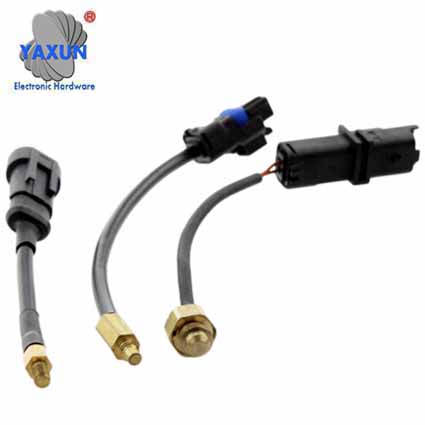
Testing of NTCs
Determine the resistance of the temperature sensor with a multimeter. High resistance when the engine is cold, lower resistance when the engine is warm. The values depend on the manufacturer. You can roughly say that at approx. 20 ° C the value is between 2 and 6 k ohms. At 80 ° C around 300 ohms.After the temperature sensor has been measured, the plug and cable must be checked for continuity and short to ground (removed NTC plug and control unit plug). The PIN assignment of the control unit connector would be helpful here.
Values:
Continuity test: approx. 0 ohms.
Short to ground:> 30 M Ohm
Lastly, check the supply voltage. Control unit plug connected, ignition on, NTC plug unplugged
Worth:
approx. 5V
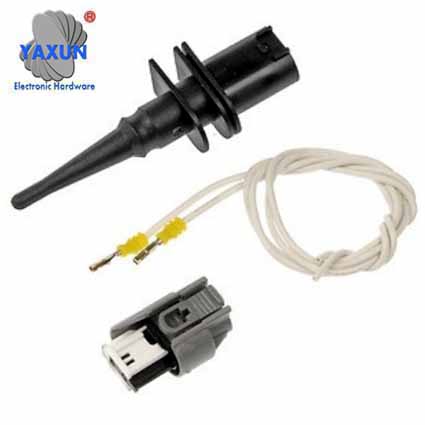
High temperature sensor
Special temperature sensors are required to protect components such as turbochargers. They sit directly in the exhaust gas flow, measure its temperature and forward the data to the engine control unit for evaluation and further processing.The high temperature sensor (HTS) from BERU, which has a measuring range from minus 40 to plus 950 degrees Celsius, has a high level of exhaust gas resistance. As the actual sensor, it has an RTD element (Resistance Temperature Detector) made of platinum with a standard characteristic curve in accordance with DIN IEC 751. A major plus point of such a platinum sensor element is its standardized characteristic curve and OBD capability over all temperature ranges. It is ideally suited for Monitoring of turbochargers, exhaust gas recirculation systems, diesel particulate filters and DeNOx catalysts.
Conventional platinum sensor elements consist of a thin layer of platinum applied to a substrate made of aluminum oxide, which in turn is protected from damage by a thin glass cover. At temperatures of around 800 degrees Celsius, processes set in with platinum measuring resistors which, among other things, can change their characteristic curve. In the newly developed platinum measuring resistor, BERU has therefore replaced this glaze layer with an insulating ceramic layer, which is applied tightly with the help of special processes. This structure prevents chemical aging of the sensor element. The measuring resistor is well protected in a closed protective cap filled with magnesium oxide. Like all subsequent metallic components, this consists of the special chrome-nickel steel INCONEL 601, which is excellently suited for use due to its excellent temperature and sulfur resistance.
Thermocouples
If you basically connect two different metals at one end, you get a thermocouple. This converts heat into electrical energy through thermoelectricity (Seebeck effect). At the free ends of the two interconnected conductors, an electrical voltage is generated when there is a temperature difference along the conductors. The connection point and the free ends must have different temperatures for this. A thermocouple is therefore also suitable as a temperature sensor.Thermocouple principle
For example, platinum-rhodium / platinum thermocouples are suitable for temperatures from 0 to 1600 ° C and nickel-chromium / nickel thermocouples are suitable for thermal voltages between −270 ° C and 1372 ° C.





